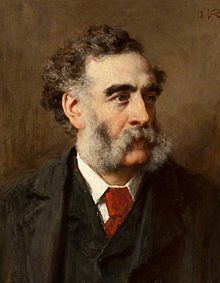Name Douglas Robertson | Role Surgeon | |
 | ||
Education University of St Andrews, University of Edinburgh | ||
Douglas Moray Cooper Lamb Argyll Robertson (1837 – 3 January 1909) was a Scottish ophthalmologist and surgeon. Argyll Robertson pupil is named after him.

Life
He was born in Edinburgh in 1837. He was son of Dr John Argyll Robertson, surgeon and president of the Royal College of Surgeons of Edinburgh in 1846. His older brother, C. Lockhart Robertson was an eminent psychiatrist and Lord Chancellor's medical visitor.
After earning his medical degree in 1857 from the University of St Andrews, he went to Berlin to study under Albrecht von Graefe (1828–1870). Robertson spent most of his medical career in Edinburgh as an eye surgeon at the Edinburgh Royal Infirmary and teacher of ophthalmology at the University of Edinburgh. For a while he was honorary eye physician to Queen Victoria and King Edward VII.
Robertson made several contributions in the field of ophthalmology; in 1863 he researched the effects on the eye made by physostigmine, an extract from the Calabar bean (Physostigma venenosum), which is found in tropical Africa. He correctly predicted that physostigmine would become very important in the treatment of eye disorders. He also described a symptom of neurosyphilis that affects the pupils of the eye, a condition known today as Argyll Robertson pupils.
He was president of the Royal College of Surgeons of Edinburgh for 1886-87.
He died in Gondal, India in 1909 and was cremated on the banks of the river Gondh.
